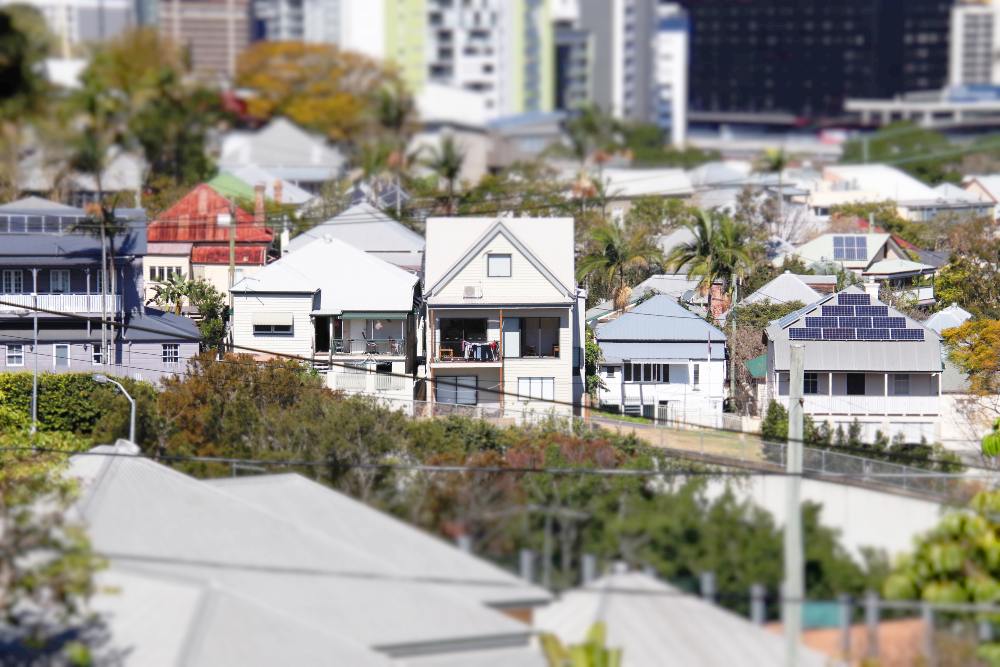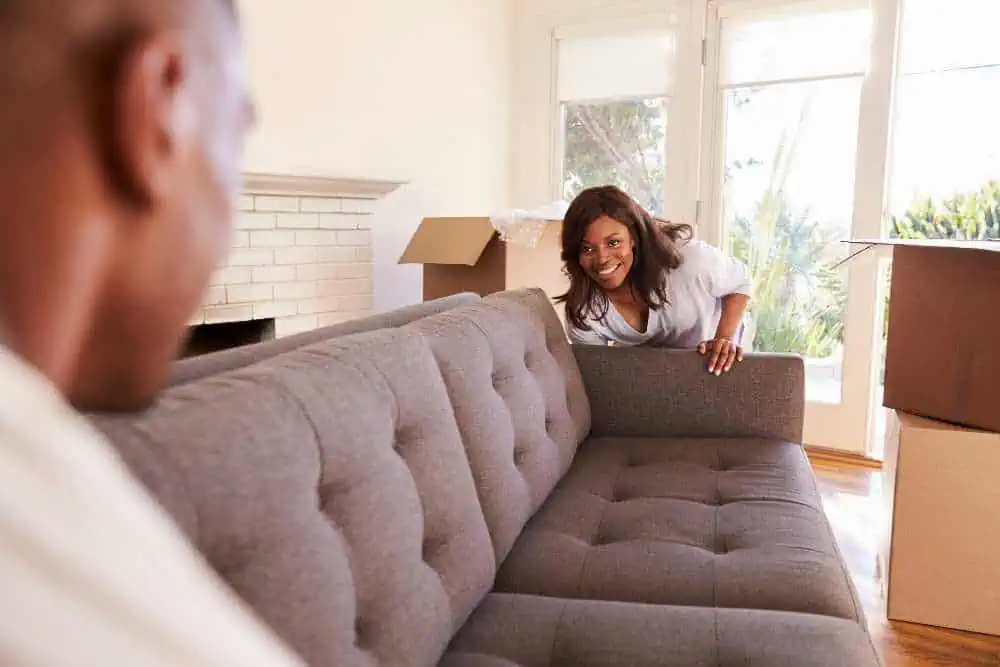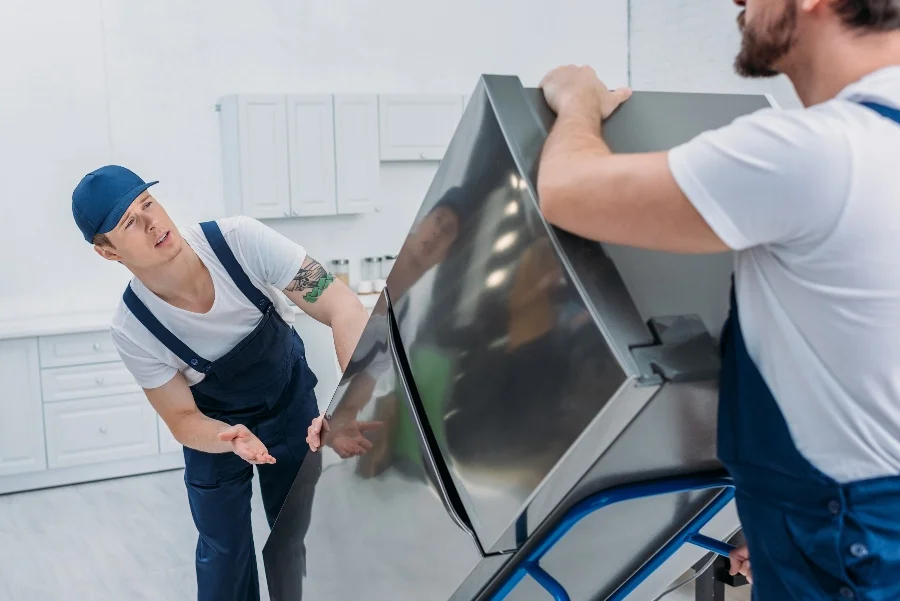Breaking Down Brisbane Cost Of Living: From Rent To Restaurants
In this comprehensive guide, we delve into the cost of living in Brisbane, the fast-growing capital of Queensland, Australia, and explore how it varies based on housing, transportation, food, healthcare, education, and leisure activities. This article will provide an overview of the cost of living in Brisbane, including how it compares to other major cities in Australia and worldwide.
Housing costs in Brisbane can be a significant expense for residents, with prices varying depending on the location, size, and type of accommodation. The cost of renting an apartment or house in the city centre can range from $1,200 to $2,500 per month, while outside the city centre, rent prices can range from $900 to $1,800 per month.
Transportation costs in Brisbane are relatively affordable, with a one-way ticket on public transport costing around $4.50 and a monthly pass costing around $150. Food and grocery costs are also reasonable, with an essential meal at a restaurant costing approximately $20 and a litre of milk costing roughly $2.00.
Let’s dive in!
Disclaimer: The prices listed in this article are in AUD and are intended as a guide. They are indicative only. We recommend investigating costs specific to your personal circumstances.
Key Takeaways For The Cost Of Living In Brisbane
- Housing costs in Brisbane can be a significant expense, but transportation and food costs are relatively affordable.
- The cost of living in Brisbane is cheaper than in other major Australian cities, such as Sydney and Melbourne.
- While the cost associated with living in Brisbane is generally reasonable, residents should still budget carefully to ensure they can afford all of their expenses.
Planning your move to Brisbane? Make it seamless and stress-free with Vmove Removals professional interstate removalist services.
Overview of Brisbane
Let’s break down the fundamentals!
Brisbane is Queensland, Australia’s capital and the third most populous city in the country. It is located on the east coast of Australia and is known for its warm climate, stunning beaches, and vibrant culture.
Economy and Industry
Brisbane has a diverse economy, with major industries including finance, information technology, and tourism. It is home to many multinational companies and has a thriving start-up scene. The city also has a strong education sector, with several universities and vocational institutions.
General cost of living
Brisbane’s living cost is generally lower than other major Australian cities such as Sydney and Melbourne. However, the cost of living can vary depending on location, lifestyle, and accommodation choices. According to Expatistan, a family of four can expect to spend an estimated AU$7,197 per month. In contrast, a single person can expect to pay around AU$3,978 monthly.
Accommodation Costs
- Central Business District: Renting a one-bedroom apartment in the CBD can range from AU$421 to AU$645 per week.
- Homestay Options: Accommodation with the entire board may cost around AU$350 per week.
- Private Rentals: Private rental homes generally cost more than other options.
Overall, Brisbane is a vibrant and affordable city with a diverse economy and plenty of opportunities for work and study. While the cost of living can vary, many options are available for those looking to live in the city on a budget.
Housing Costs in Brisbane
Navigating Brisbane’s Housing Market: From Rentals to Homeownership
Brisbane is a city that offers a variety of housing options for residents. The cost of housing in Brisbane varies depending on the location, type of accommodation, and the number of bedrooms.
Average Rental Costs
The average rental cost of a one-bedroom apartment in the city centre is around AU$1,800 per month, while a three-bedroom apartment costs around AU$3,500. The cost of living in Brisbane is cheaper than in 50% of cities in Australia but more expensive than in 67% of cities in Oceania.
Affordable Suburbs
For those looking for cheaper housing options, many suburbs in Brisbane offer affordable rental prices. Suburbs such as Logan, Ipswich, and Caboolture have relatively lower rental costs than the city centre.
Shared Accommodation
- Cost-Saving Option: Sharing a house or apartment can notably reduce rent and utilities.
- Where to Find: Websites such as Flatmates and Gumtree list shared accommodations.
Buying Property
- Average Costs: A one-bedroom apartment outside the city centre averages around AU$350,000, while a three-bedroom is around AU$600,000.
- Price Fluctuation: Costs can differ substantially depending on location and type of property.
Overall, the cost of housing in Brisbane can be relatively high in some circumstances. Still, compared to other states, it can be significantly lower. There are affordable options available for those willing to look. It is essential to consider factors such as location, type of accommodation, and number of bedrooms when looking for housing in Brisbane.

Transportation Costs in Brisbane
Navigating Through Brisbane: A Guide To Frugal Mobility
Getting around Brisbane can be cheap, but it can add up if you’re not careful.
Public Transport
Public transport is a popular option for many locals and visitors alike. A one-way ticket will cost AUD 5.50 on average, with prices ranging from $ $3.70 to $ 8.50.
For those who use public transport frequently, purchasing a Go Card may be more cost-effective. This reusable smart card can be used on buses, trains, and ferries throughout South East Queensland. The card can be topped up with credit and offers discounted fares compared to single-use tickets.
Driving and Parking
If you prefer to drive, Brisbane has a well-connected road network. However, be aware that parking can be expensive in some areas. On-street parking is metered and can cost up to AUD 5 per hour in the CBD. Parking in private car parks can cost up to AUD 50 per day.
Ride-Sharing Services
- Availability: Ride-sharing services like Uber and Ola are widely available in Brisbane.
- Cost: Prices are competitive with taxis but vary depending on distance and time of day.
Overall, transportation costs in Brisbane can vary depending on your preferences and travel habits. By being aware of your options and planning, you can save money and make the most of your time in this vibrant city.
Food and Groceries Costs
Navigating the Brisbane Food Scene: Affordable Options and Where to Shop
- Average Costs: A family of four spends around AU$7,197 monthly, and a single person spends AU$3,978 monthly on food and groceries.
- Grocery Bills: Weekly grocery bills for a four-person household average at AU$207, varying by supermarket.
- Eating Out: Costs range from AU$20 for an inexpensive meal to AU$100 for a three-course meal for two.
- Supermarket Choices: Ranges from budget-friendly options like ALDI to higher-end options like Harris Farm Markets.
Brisbane offers many culinary choices, from local markets to high-end restaurants. The cost of food and groceries in Brisbane is relatively budget-friendly. On average, a family of four can expect to spend around AU$7,197 per month, while a single person might spend approximately AU$3,978.
Regarding grocery shopping, the average weekly bill for a four-person household is estimated to be AU$207. However, this number can fluctuate based on the supermarket of your choice. For instance, shopping at Harris Farm Markets could raise your weekly grocery bill to AU$223, while opting for ALDI could bring it down to AU$181.
For those who enjoy dining out, Brisbane offers a variety of affordable options. According to The Best Brisbane, an inexpensive meal may cost around AU$20. In contrast, a more indulgent three-course meal for two at a mid-range restaurant would set you back about AU$100.
Regarding grocery stores, Brisbane has a range to choose from. Budget-friendly stores like ALDI and Coles generally offer lower prices on everyday items, making them a good choice for those looking to economise. On the other end of the spectrum, you have higher-end options like Woolworths and Harris Farm Markets for those who don’t mind splurging a bit more.
Overall, Brisbane offers a favourable cost of living, especially regarding food and groceries. You can enjoy a diverse culinary experience without breaking the bank by choosing budget-friendly supermarkets and local eateries.
Healthcare Costs in Brisbane
Brisbane is home to some of Australia’s best healthcare facilities, offering public and private options. Healthcare costs vary based on several factors, including the type of service, the healthcare provider, and whether or not you have private health insurance.
Public Healthcare Costs
- Free or subsidised services through Medicare for eligible individuals
- Costs for non-emergency treatments may apply
Australia’s public healthcare system, Medicare, offers free or subsidised medical services to citizens and permanent residents. In Brisbane, emergency services in public hospitals are generally free, but other treatments may have associated out-of-pocket expenses. For example, a specialist consultation might cost between $100-$200.
Private Healthcare Costs
- Private facilities offer a more comprehensive range of services
- Costs vary by service and insurance coverage
Brisbane’s Private healthcare services are offered through private hospitals, clinics, and medical centres. Private health insurance allows patients to avail themselves of various medical services, including elective surgeries and specialised consultations. Costs for these services depend on the type of service and the insurance coverage, with a private hospital stay costing between $500-$1,500 per day and specialist consultations ranging from $150-$500.
Dental and Optical Costs
- Generally not covered by Medicare
- Varying out-of-pocket expenses
Dental and optical services generally fall outside the coverage of Medicare and usually require out-of-pocket payment. Costs can vary widely depending on the provider and the specific service needed. A regular dental check-up could range from $100-$200, and a pair of prescription glasses might cost between $200-$500.
In Summary
- Research and compare providers and insurance policies for the best value
- Costs vary by type of service and provider
Healthcare costs in Brisbane can fluctuate significantly based on the type of service needed, the healthcare provider chosen, and whether or not the patient has private insurance. Researching and comparing healthcare providers and insurance policies is essential to ensure you’re getting the most value for your money.
Education Costs in Brisbane
Brisbane is home to some of the best universities and schools in Australia. However, education can be expensive if you are an international student or a local looking to enrol in private schooling. The tuition fees vary depending on the type of institution and level of education.
Primary and Secondary Education Costs
According to Futurity Invest, the tuition fee for a private primary school student in Queensland is around $2,693 per year. In contrast, the tuition fee for a private secondary school student is higher. Additionally, there are ancillary fees, such as school camps, sports equipment, and musical instruments, which can increase the overall cost of education.
Higher Education Costs
The cost can be even higher for those interested in pursuing higher education. According to Study at UQ, the average cost of tuition for international students at the University of Queensland is around $31,080 per year. Other universities in Brisbane have similar tuition fees, making higher education an expensive investment.
However, there are options for students to reduce the cost of education. For example, students can apply for scholarships, which can cover a portion of travel costs and tuition fees. Additionally, some universities offer work-study programs, which allow students to work part-time while studying to help protect their expenses. And ultimately, if you are an Australian citizen, you have a HECS-HELP loan afforded to you to attend University.
Overall, the cost of education in Brisbane can be expensive for those international students and those looking to enrol in private schooling. Still, there are options available to help reduce the financial burden.

Leisure and Entertainment Costs
Brisbane has a vibrant and active entertainment scene offering plenty of options for locals and tourists. The cost of leisure and entertainment activities in Brisbane varies depending on the type of activity and the location. Here are some of the most popular leisure and entertainment activities in Brisbane and their associated costs:
Movies
Going to the movies is a popular leisure activity, and Brisbane has several cinemas. A movie ticket in Brisbane ranges from $13 to $22, depending on the cinema and the time of day. Most cinemas offer discounts for students, seniors, and children.
Fitness and Sports
Brisbane has several fitness centres and sports clubs that offer a range of activities, including gym workouts, yoga, swimming, and team sports. The cost of a fitness club membership in Brisbane ranges from $30 to $125 per month, depending on the type of membership and the facilities offered. You can also catch the local rugby league team, the Brisbane Broncos, playing weekly at Suncorp Stadium alongside other sports.
Parks and Beaches
Brisbane has several parks and beaches that are free to visit and offer a range of activities, including picnics, barbecues, swimming, and hiking. Some popular parks in Brisbane include South Bank Parklands, Roma Street Parkland, and New Farm Park. The cost of parking at these parks varies depending on the location and time of day.
Nightlife
Brisbane has a lively nightlife scene that offers a range of options, including bars, pubs, clubs, and live music venues. The cost of a night out in Brisbane varies depending on the type of venue and the drinks and food consumed. A pint of beer in a pub or bar costs around $8, while a cocktail costs around $17.
Overall, Brisbane offers a range of leisure and entertainment activities that cater to different interests and budgets. Visitors and locals can enjoy various activities, from free outdoor to paid entertainment.
Considering a move to Brisbane? Discover how our furniture removalists can simplify your relocation process, ensuring a seamless transition to your new home – 02 7201 9367
Comparison with Other Major Cities
Brisbane is one of the major cities in Australia, with a population of over 2.5 million people. It is Australia’s third most populous city, after Sydney and Melbourne. Compared to other major cities in Australia, Brisbane has a relatively lower cost of living. According to Finder, Brisbane is the second cheapest city to live in Australia, after Adelaide.
Need removalists in Sydney for your move to Brisbane? Contact us to organise a free quote with Vmove!
Housing Costs Compared to Other Australian Cities
Compared with other major cities in Australia, Brisbane has a lower cost of living in many areas. For example, the cost of housing is significantly lower in Brisbane compared to Sydney and Melbourne. The cost of living in Brisbane is cheaper than in 50% of cities in Australia.
Transportation Costs Compared to Other Cities
In terms of transportation, Brisbane is also cheaper than Sydney and Melbourne. The cost of public transportation is lower in Brisbane, and the city is more bike-friendly than Sydney or Melbourne. Additionally, the cost of food and groceries is relatively lower in Brisbane than in other major cities in Australia.
Food and Grocery Costs Compared to Other Cities
However, it is essential to note that the cost of living in Brisbane can vary depending on the location and lifestyle. For example, living in the city centre can be more expensive than living in the suburbs. Additionally, the entertainment and restaurant prices for dining out can be higher in some city regions.
Overall, Brisbane is a relatively affordable city compared to other major cities in Australia. It offers a good quality of life and a range of amenities and services.
Parting Thoughts
Brisbane is a vibrant and affordable city to live in. Living in Brisbane is relatively cheaper than other major cities in Australia. However, the cost of living in Brisbane varies depending on the suburb, lifestyle, and personal preferences.
General Monthly Costs
The monthly cost for a family of four without rent is approximately AUD 6,558.5. In contrast, a single person’s estimated monthly cost without rent is AUD 1,850.8. Furthermore, The monthly cost of living for a family of four in Brisbane is AUD 7,197. In contrast, a single person’s estimated monthly cost is AUD 3,978.
Housing in Suburbs like Springwood
Springwood is a well-established residential and commercial suburb that offers affordable housing options. The median price for a unit in Springwood is AUD 244,704, and the estimated monthly rent is AUD 1,461.
Lifestyle and Preferences
It is essential to note that the cost of living in Brisbane can vary depending on the individual’s lifestyle and preferences. For instance, transportation, food, and entertainment costs can significantly impact the overall cost of living.
In Summary
Living in Brisbane offers a unique blend of affordability, quality of life, and a thriving community. Whether you’re contemplating housing costs, education, healthcare, or daily expenses, Brisbane is a competitive option compared to other major cities in Australia. However, individual experiences may vary based on personal lifestyle choices, location, and even the initial costs of moving to this vibrant city.
If you’re planning a move, Vmove removals provides a range of services to make the transition smooth. From local removalists to interstate removalists and specialised piano and furniture removalists, you’re sure to find a service that fits your needs. And if you need temporary storage solutions, there are plenty of options to choose from.
Explore our specialised removalist blog for further insights, perfect for anyone considering relocation within Sydney, NSW, or across Australia. Our featured articles include a comprehensive guide on “The Best Places to Live in Sydney: A Comprehensive Guide,” as well as expert breakdowns on “The Top 9 Best Places To Live In Tasmania” and “‘Top 10 Best Places To Live In Queensland‘.

In Summary
Frequently Asked Questions
What is the average monthly cost of living in Brisbane for a family of 5?
A family of five needs around $8,000 to $9,000 monthly to cover living expenses in Brisbane. This includes rent, utilities, food, transportation, and other basic needs.
What is the cost of living comparison between Brisbane and Sydney?
Compared to Sydney, Brisbane has a lower cost of living. Brisbane’s cost of living index is 14% lower than in Sydney. This means that overall, Brisbane is a more affordable city to live in than Sydney.
What salary is required to live comfortably in Brisbane?
The average annual salary in Brisbane is about AUD 70,000. This average salary is enough for a single person to afford the monthly living expenses and spend on leisure activities. Depending on your lifestyle, you can spare some money to save each month in Brisbane.
What are the living costs in Queensland for international students?
The average cost for a single international student to live comfortably in Brisbane is from $400 to $750 per week, depending on their living circumstances. This includes rent, utilities, transportation, food, and other basic needs.
What is the average income in Brisbane?
As mentioned earlier, the average annual salary in Brisbane is about AUD 70,000. However, the average income may vary depending on the industry, job role, and experience.
How does the cost of living in Brisbane compare to Melbourne?
Compared to Melbourne, Brisbane has a lower cost of living. According to Expatistan, Brisbane’s cost of living index is 7% lower than in Melbourne. This means that overall, Brisbane is a more affordable city to live in than Melbourne.









